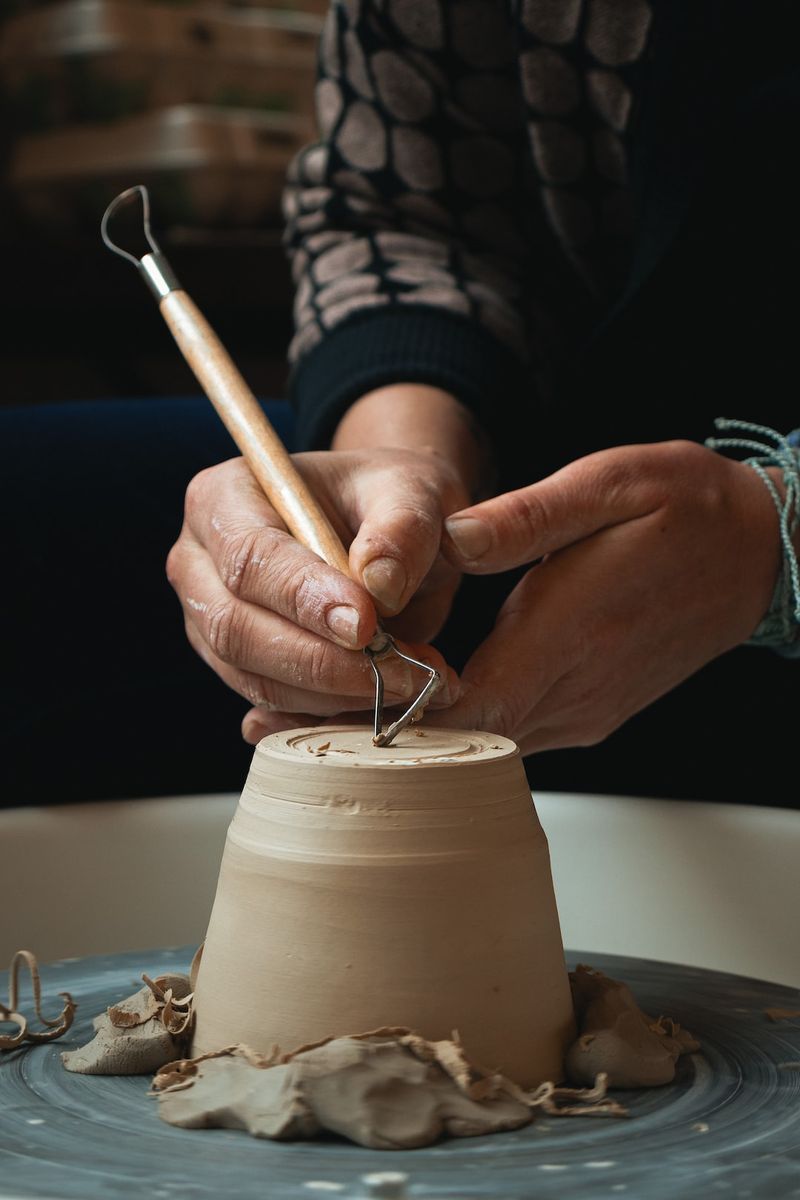Pottery Firing Tradition Continues at Sturt, Celebrating Ancient Artistry
Every year, a group of dedicated potters gather at the Sturt gallery and art studios in the New South Wales Southern Highlands to partake in an extraordinary firing ritual. For four days and nights, these potters tend to a massive 5-meter-long anagama kiln, carefully stoking the fire and creating a mesmerizing display of fire and clay. The anagama kiln is a traditional Japanese kiln used to create Japanese pottery, and it holds close to 1,000 ceramic works.
Masters and Collaborators Come Together
The annual firing at Sturt brings together 25 potters, including master potters, who collaborate in an effort to continue the ancient tradition that dates back centuries. Sturt, founded in 1941 by Winifred West, is Australia’s oldest design center and has a rich history of pottery and artistry. The association with Japan began with the founding potters’ travels to study kilns, and every year, master potters from all over the country gather at Sturt to fire the anagama kiln.
The Alchemy of Wood Firing
Wood firing in an anagama kiln is an intensive and mesmerizing process. The potters load the kiln with carefully crafted ceramic works, and as the fire dances up and down the kiln, different effects are created on the pottery. The combination of different glazes, clay bodies, and the movement of the flame results in a unique, almost alchemical transformation. The potters never get the same results twice, as the many variables, including temperature and the type of wood used, contribute to the creation of truly individual pieces of art.
Kristie Phelan, the head of Sturt, explains that wood firing is addictive due to the unpredictability and magic of the process. The potters become part of the flame, mentally “painting with fire” as they carefully stack and pack the kiln to create resistance and allow the pots to absorb heat. According to Jann Kesby, a legendary wood firer who trained at Sturt in the 70s, there is an art to stacking the kiln vertically, horizontally, and against one another, ensuring that each pot receives the desired heat and flame exposure.
Preserving Ancient Traditions and Inspiring Creativity
The annual firing of the anagama kiln at Sturt not only continues an ancient tradition but also serves as a beacon of creativity and artistic collaboration. It brings together master potters, experienced ceramicists, and eager learners from all over Australia, providing a unique opportunity to learn from the masters and explore the art of wood firing.
For Sturt, this tradition is much more than a firing event. It is a celebration of craftsmanship, a connection to nature, and a testament to the enduring power of art to inspire and create magic. As Kristie Phelan explains, Sturt is built on the idea of bringing master makers from all over the world to live, teach, and share their skills. The annual firing of the anagama kiln embodies this spirit and continues to inspire generations of potters to explore the artistry and alchemy of clay and fire.
Editorial: The Significance of Artistic Traditions
The firing of the anagama kiln at Sturt serves as a reminder of the importance of preserving and celebrating artistic traditions. In a fast-paced, modern world, where technology often dominates our lives, it is crucial to recognize the value of ancient art forms and the lessons they teach us about patience, craftsmanship, and the beauty of imperfection.
Wood firing in an anagama kiln is a labor-intensive process that requires dedication, skill, and a deep understanding of the materials and the elements. The potters who gather at Sturt every year demonstrate their commitment to crafting unique pieces of art that bear the marks of fire and time. They embrace uncertainty, knowing that each firing will bring new surprises and discoveries.
By continuing to pass down these ancient traditions and techniques, we ensure that the wisdom and knowledge of the past are not lost. In doing so, we provide future generations with a rich tapestry of artistic heritage and a source of inspiration that can guide their own creative journeys. The firing of the anagama kiln at Sturt serves as a reminder that art is not simply a luxury, but a vital part of our cultural identity.
Advice: Embracing Artistic Journey
For those who are passionate about pottery and ceramics, the firing of the anagama kiln at Sturt is a testament to the possibilities that lie ahead. It is an invitation to explore the magic and alchemy of clay and fire, to embrace the journey of artistic creation, and to delve into the rich history and traditions of this ancient art form.
Whether you are a seasoned potter or someone just starting to learn about the craft, taking the time to immerse yourself in the process of wood firing can be a transformative experience. It teaches us patience, resilience, and the beauty of embracing the unexpected. It allows us to connect with nature and understand the delicate balance between control and surrender.
So, if you find yourself drawn to the world of pottery and ceramics, seek out opportunities to learn from the masters, attend workshops, and immerse yourself in the artistry and technique of firing kilns. Embrace the challenges and joys of wood firing, and let the fire dance and the clay transform beneath your hands. The journey may be unpredictable, but the rewards are immeasurable.

<< photo by Aedrian >>
The image is for illustrative purposes only and does not depict the actual situation.
You might want to read !
- Super Blue Moon: A Spectacular Celestial Event Lights Up the Night Sky in Canada
- Ebony Wine & Spirits: Elevating Black Excellence in the Alcohol Industry
- Concert Review: The Chicks’ Triumphant Calgary Comeback Showcases Unyielding Resilience and Empowered Performance
- ‘The Little Mermaid’ Makes Waves on Disney+
- Remembering the Legacy: Canadian Singer Bruce Guthro Passes Away at 62
- Exploration éditoriale : France renverse la Nouvelle-Zélande pour atteindre la finale de la Coupe du Monde de Rugby
Résultat : Victoire historique de la France contre la Nouvelle-Zélande en demi-finale de la Coupe du Monde de Rugby - Battle of the Subcontinent: India Locks Horns with Nepal in LIVE Cricket Clash (178-6)
- “Vacation Friends 2” Review: Escapades Unleashed
- “Hurricanes’ Controversial Hiring: Bill Peters Returns to WHL, Aliu Raises Concerns”
- Bill Peters named new head coach of the Lethbridge Hurricanes: A step towards revitalizing the team’s success
- Rise of Drone Attacks: Ukrainian Conflict Spreads to Russian Territory
- Unraveling the Mysteries: An Analysis of the Puzzling Finale in Indiana Jones and the Dial of …




